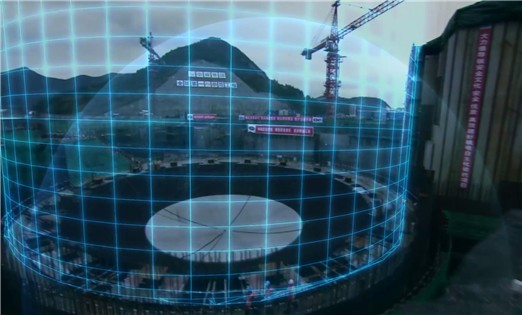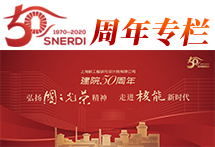[ICONE25 ON AIR] Advanced Nuclear Fuel Development Trends and Technical Solutions
As the basic unit of reactor nuclear heat conversion and an important barrier of radioactive fission products containing, nuclear fuel has experienced a number of upgrading and technological innovation under the development concept of safety, reliability and economic. After the Fukushima accident, coping with the idea of higher inherent security, how to take into account the higher security, higher reliability and better economy in the next generation of advanced fuel R&D and technology development? Based on the basis of the existing domestic fuel industry system, can China's advanced nuclear fuel R&D succeed in achieving the "corner overtaking"?
The 25th International Conference on Nuclear Engineering (ICONE 25) held an international expert forum entitled "Robust Fuel Development (including ATF)", which clearly outlined the main development path of the next generation of advanced nuclear fuels and gave an "idea traction, technology-driven, industrial support, technology integration" solution.
Advanced fuel R&D and material innovation
As the international fuel technology pioneers, Westinghouse Electric Corporation, Areva Corporation and Toshiba Corporation respectively introduced their progress in the field of advanced fuel R&D for the proposed advanced idea of the Accident Tolerant Fuel (ATF).
Dr. Wang Guoqiang from Westinghouse introduced the progress of Westinghouse Advanced Fuel (EnCore). This new fuel with ATF features has completed the design and preliminary program demonstration. Its design features include new cladding materials and new high uranium density fuel pellet materials, which are expected to reduce power plant operating costs by up to 10.3% and improve the ability of fuels to resist oxidation and reduce hydrogen production in accident conditions.
Gwen Bolsée from Areva introduced the progress of Areva Advanced Fuel. Its high performance fuel assembly (GAIA), whose main design features include Q12 zirconium alloy structural materials, which can improve the structural stability of fuel assembly, has been developed. At the same time, the R&D of Enhanced Accident Tolerant Fuel (EATF) has made great progress.
Kazuo Kakiuchi from Toshiba introduced the progress of SiC cladding which could improve the oxidation resistance and reduce hydrogen production in accident conditions. At present, non-full-sized SiC cladding tubes have been successfully fabricated. The fabrication of full-size SiC cladding tubes, the modeling of cladding oxidation in the accident conditions and the research of fuel irradiation performance in normal operating conditions will be followed.
Technological innovation accelerates material R&D.
With the continuous development of advanced nuclear fuel technology, the R&D field of nuclear fuel materials presents a flourishing situation. On how to accurately grasp the material radiation damage mechanism, Professor Lumin Wang from the University of Michigan gave an efficient technical solution which inferred macro performance from the microscopic indicators: "The ion irradiation test supplemented with TEM characterization analysis is an effective method for the analysis and evaluation of the microstructure of the irradiated material. It can provide reliable irradiation behavior prediction and evaluation for the R&D of advanced fuel materials and provide guidance for optimization and improvement of material composition and structure."
The R&D of advanced fuel = technical innovation + industrial support
"The R&D of advanced fuel is inseparable from a strong industry support. China has established a complete nuclear fuel manufacturing and R&D industrial system," said Feng Xin, the Deputy General Manager of China Nuclear Fuel Corporation. Combined with China's closed fuel cycle planning, he focused on the construction situation of China’s current fuel industry capacity, production status of FA300, VVER, AFA 3G, CANDU-6, AP1000, HGTR and other types of fuel, as well as the R&D of CF fuel assemblies.
"The demand for advanced fuel R&D begins with the unremitting pursuit of safety, reliability and economy, and the fundamental driving force comes from technological breakthroughs and overall integration," said Libing Zhu, deputy director of Department of Nuclear Fuel and Material Research from SNERDI. Combined with an in-depth interpretation of the current international advanced fuel R&D trends, he elaborated R&D ideas and design concepts of CAP1400 fuel from three aspects of material innovation, structure enhancement and program model development, and further introduced the main R&D progress of CAP1400 fuel.
This international expert forum is an important part of ICONE25's forward-looking technical discussion, and will provide important reference for the follow-up international R&D of advanced fuel. Shanghai Nuclear Engineering Research & Design Institute plays an important role in technical exchange and evaluation. The experts said, “This forum represents the current highest level of technology and the latest R&D achievements in the field of international advanced fuel R&D, and will have a profound impact on China's advanced fuel R&D trends and technology development.”




